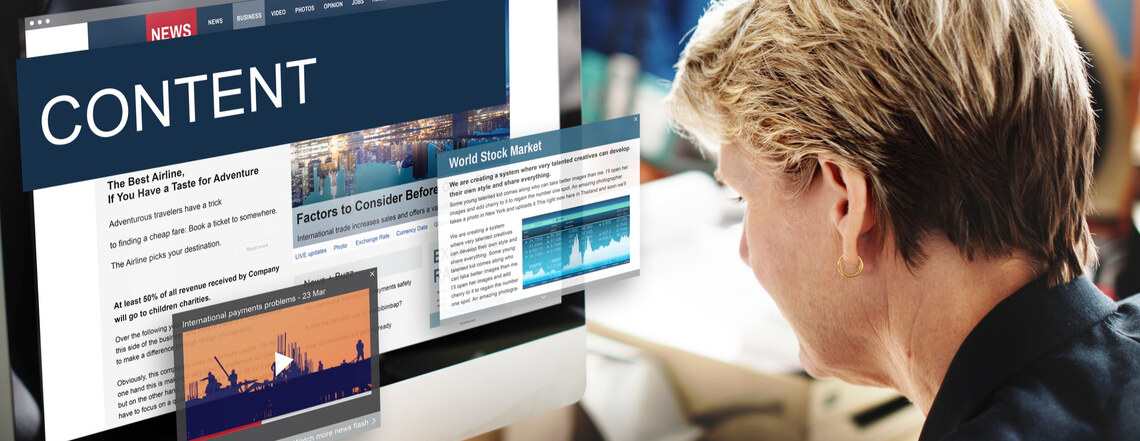Crafting the first paragraph is often the most difficult part of any writing assignment.
That’s because every writer knows how critical that “lead” is. A good one will grab readers’ attention and entice them to read on. A bad one will keep readers from getting to paragraph two. Purdue University’s Online Writing Lab reminds writers that today, with the multitude of information sources available, “Audiences simply are not willing to read beyond the first paragraph – or even sentence – of a story unless it grabs their interest.”
The lead of your article — or blog post — is your first impression with the reader. Writing a great lead helps you establish the voice and direction of an article and signals to the reader that it’s worth taking the time to read. What makes for a great lead? Here are some pointers:
Begin at the beginning
Even before starting to write, you should scope out the concept for the article. To do this, you’ll need to apply what every journalist learns in Reporting 101: The Five Ws.
• Who? Who are the people involved in the story?
• What? What happened?
• When? When did it happen?
• Where? Where did it happen?
• Why? Why did it happen?
Many writers add an H, as well. How? How did it happen? Not all of these questions will be relevant, and you can’t get everything into your first paragraph. But your lead will set you up to ensure that you have covered most of them eventually. Sum up what you have to say in a meaty sentence or two, then run a quick test. If a question was relevant but not answered, a rewrite is probably necessary. Keep revising until you’re happy with what you have before you move forward with the article.
Above all, take your time to get it right. Don Wycliff, a longtime editor at the Chicago Tribune, said that if he had two hours to write something, “The best investment I can make is to spend the first hour and 45 minutes getting a good lead, because after that everything will come.”
Avoid clutter
You can put a number of things into a lead, but you should leave out some things too. Don’t include unnecessary words or phrases. Just cut to the chase and avoid cluttering up the lead. Use strong nouns and verbs. Do not overuse adverbs or adjectives that can make the lead look flowery and become distracting. Additionally, don’t include words that may require the reader to search for a dictionary.
Above all, make your lead genuine. Readers will quickly see through a lead that’s formulaic. Make your writing strong and engaging.
Types of leads
How you approach the lead depends on the type of content you are writing. Consider the following:
Summary lead: This is typically used in news, especially breaking news. It will answer all the Ws right away. For example: Two pedestrians were killed today in a cross walk in Los Angeles when a black SUV failed to yield and sped through a red light.
Creative lead: Most blot content will not be straightforward news. Thus, a creative lead may be necessary. When writing a creative lead, consider using a statistic that will surprise the reader. Take a common phrase or expression and give it a twist. Be humorous. Tell a story. In a blog featuring stories about small businesses, the author wrote: “Opened in 2010, this Irish pub nearly met its end in July 2015 when a three-alarm fire that burned Louisville, Kentucky’s Whiskey Row raged only feet away.”
Contrast lead: This kind of lead draws contrast between two opposite extremes such as past and present or tragedy and comedy.
Picture lead: As it implies, the lead paints a visual for the reader. Use vivid words to help the reader “see” the story.
Scenic lead: This is good for festive events such as sports or performances. Begin with a description of what happened and describe the scene to create an appropriate mood for the article.
Quotation lead: Start with a short and eye-catching remark that can be properly attributed. However, some authors have been known to grab attention by using quotations that quickly set a tone of sarcasm such as, ” ‘You can’t believe everything you read on the Internet.’ -Abraham Lincoln.”
Question lead: Feature a pertinent query to spark the readers’ curiosity and engage them in a way that will ensure they read the story to get the answer.
Whatever you do, don’t “bury the lead.” Readers do not want to go through paragraphs of copy just to find the one piece of information they were seeking. While it is good to summarize in conclusion, make your point at the beginning, not the end.
Tempesta Media is a managed services provider of custom original content for digital agencies, website developers and PR firms. Our writers are experts at writing leads that engage readers and get results.
If you have a content marketing program, or are planning one, download our ebook: 100 mistakes businesses make when starting, optimizing and scaling content marketing programs. Learn from the mistakes of hundreds of other companies. 100 mistakes walks you through common and uncommon challenges that they faced with their content marketing programs.











